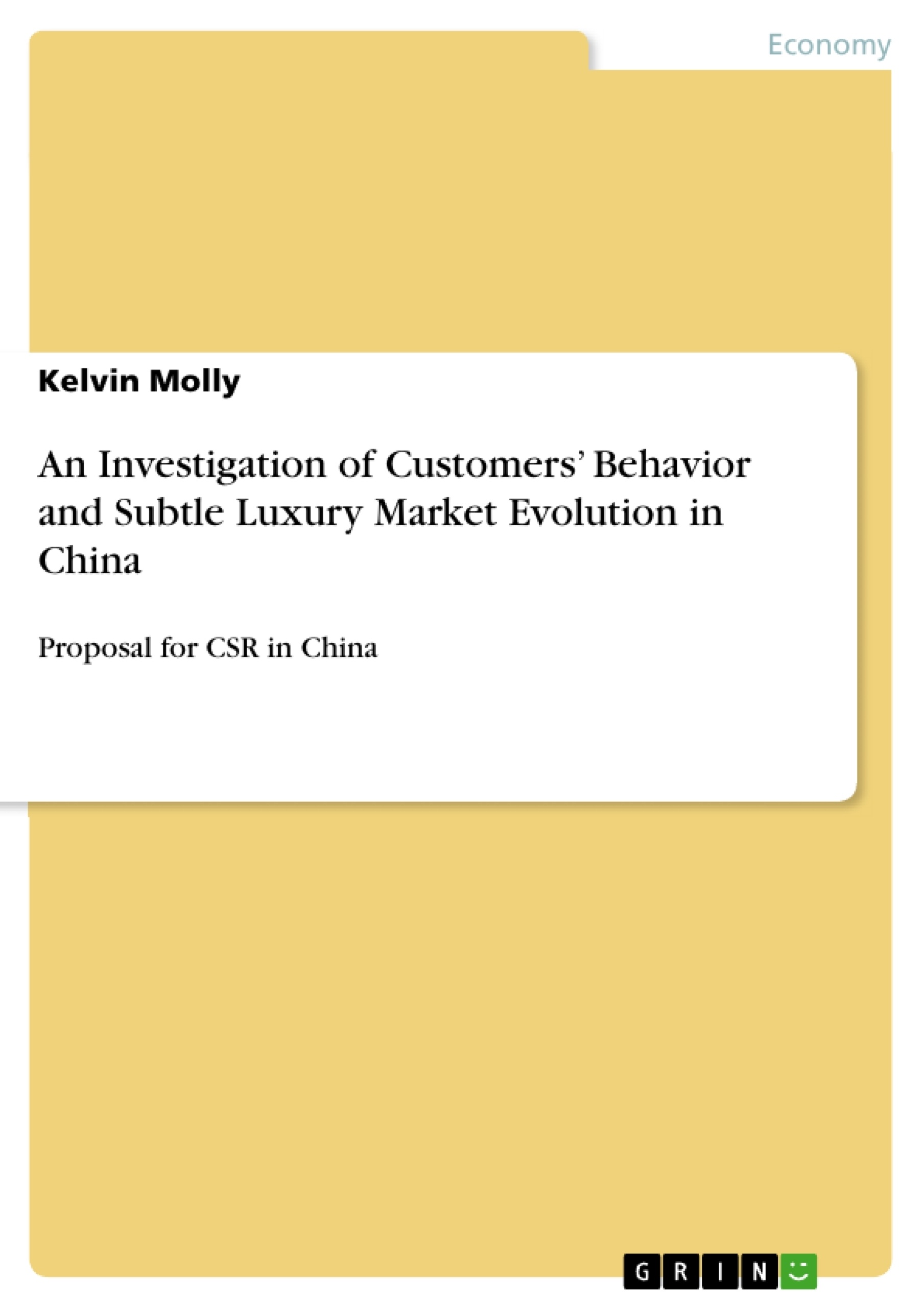The luxury brand industry in China is still growing despite the global recession. It is hard to imagine that exclusive labels were once the preserve of the European aristocracy, that a mere few decades ago these beautifully crafted pieces of clothing and accessories were perfectly for the pleasure and adornment of an oriental developing country.
This report will be examining the behavior of upper middle class and subtle luxury market evolution in China with a range of finding presented. As consumers react to wider choice, faster-changing fashion, luxury brand must adjust its strategies in order to gain insights into how to be competitive in the new Chinese market.
The part begins with an interview result which indicates key strategy and business opportunity in long term. This is followed by three objectives and discussion of the particular emphasis to support the aim. It also presents the methodology and an elaborate secondary research, which included relevant CSR study and an analysis of Gucci’s inhumane working condition within China market. Recommendation is able to performance finally with consideration.
Inhaltsverzeichnis (Table of Contents)
- Introduction
- Aim
- Objectives
- Methodology
- Secondary research
- Conclusions and recommendations
- Bibliography
Zielsetzung und Themenschwerpunkte (Objectives and Key Themes)
This report delves into the behavior of the upper middle class in China and the evolving subtle luxury market. It aims to provide insights into strategies for luxury brands to remain competitive in the Chinese market by understanding consumer reactions to wider choice and faster-changing fashion trends.
- The growing influence of the upper middle class on the Chinese luxury market.
- The impact of social responsibility on consumer purchasing decisions in the luxury sector.
- The evolution of consumer taste and the importance of brand image in the Chinese luxury market.
- The role of Corporate Social Responsibility (CSR) in shaping consumer perceptions and brand loyalty.
- The challenges and opportunities for luxury brands in navigating the Chinese market.
Zusammenfassung der Kapitel (Chapter Summaries)
- Introduction: This chapter outlines the growth of the luxury brand industry in China, highlighting the emergence of the upper middle class as a key consumer segment. It presents data on the predicted growth of this demographic and its impact on luxury goods purchases. The chapter also touches upon the increasing importance of social responsibility in consumer decision-making.
- Aim: This chapter sets out the objectives and scope of the report, focusing on the behavior of the upper middle class and the evolving subtle luxury market in China. It highlights the need for luxury brands to adapt their strategies to remain competitive in this dynamic market.
- Objectives: This chapter discusses the changing landscape of consumer behavior in China, emphasizing the evolving perceptions of luxury brands and the growing influence of individualism and brand reputation. It also touches upon the role of philanthropy and ethics in shaping consumer preferences.
- Methodology: This chapter outlines the research approach used in the report, emphasizing the use of diverse sources such as books, lectures, internet resources, and academic studies. It outlines the research strategy, which encompasses both quantitative and qualitative research methodologies.
Schlüsselwörter (Keywords)
This report focuses on key themes related to the Chinese luxury market, including: upper middle class, subtle luxury, brand image, consumer behavior, social responsibility, CSR, brand strategy, market evolution, competitive advantage, and sustainable development.
- Arbeit zitieren
- Kelvin Molly (Autor:in), 2014, An Investigation of Customers’ Behavior and Subtle Luxury Market Evolution in China, München, GRIN Verlag, https://www.grin.com/document/270819



